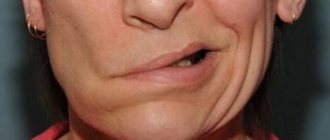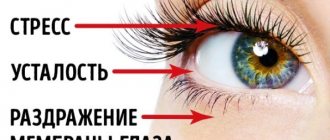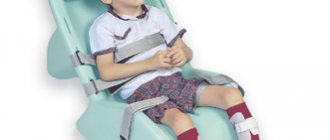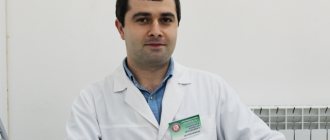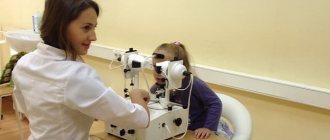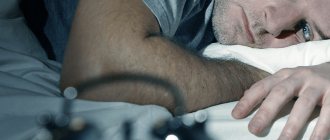Motor speech area of the cerebral cortex, Broca's area
The motor speech area is an area of the cerebral cortex located in the posterior
section of the inferior frontal gyrus of the dominant hemisphere anterior to the cortical centers of movements of the lips, larynx, and tongue. When the motor speech area is damaged, motor alalia or motor aphasia occurs (motor alalia or motor aphasia syndrome).
Speech
18.02.2020
The ability to speak, speech is a way of communicating through verbal coding. Speech is characteristic only of humans and is the most perfect means of communication that arose in the process of evolution of living beings. While in animals communication systems satisfy urgent biological needs (contact of birth with a child, search for a sexual partner, group hunting), in humans speech serves to formulate and transmit thoughts that are often abstract.
Speech allows you to express established cause-and-effect relationships between phenomena in the world and make generalizations. The conclusions drawn are passed down from generation to generation through written language , which underlies human progress, culture and knowledge. Speech differs from other forms of communication in its creative nature—to express a new idea, words must be combined in a certain way. Therefore, speech is the most complex form of human behavior, which requires a combination of perceptions, motor regulation and mental processes.
The acquisition and development of speech in humans is a long process that requires training. Young children first begin to understand speech . In the second year they begin to pronounce single words or syllables, and in the third year they can effectively form entirely new expressions and have meaningful conversations with children and adults. At early school age, children learn to read and write, through which they also learn written language . At the beginning , speech is in the nature of imitation, and words are associated with a specific object or sensation. With the acquisition and development of language , words become more abstract in nature as they begin to generalize the characteristics of many similar objects.
Participation of the hemisphere (dominant and non-dominant) in speech function
The main cortical areas responsible for speech function are located in only one of the hemispheres, which is designated as the dominant hemisphere. The left hemisphere is dominant in 98% of right-handers and 60-70% of left-handers, while the right hemisphere is dominant in only 15% of left-handers. Some people do not have pronounced lateralization of speech function.
The areas associated with speech in the dominant hemisphere are located around Silva's fissure (sulcus lateralis). This:
- Broca's area - located in the lower anterior fold;
- Wernicke's area - located in the posterior part of the superior temporal fold;
- gyrus angularis and gyrus supramarginalis - located in the inferior parietal fold.
Using many tests for studying speech , it was found that, in addition to these zones, other association zones are activated in the frontal, parietal and temporal lobes of the dominant hemisphere. Aphasia (a severe speech ) develops when the major areas associated with speech .
Speech function of the dominant hemisphere
The most common model explaining speech function is the Wernicke-Geschwind model. According to his concept, when listening to words, the primary and secondary auditory areas in the temporal lobe are activated (Brodmann areas 41 and 42). After this, the activity moves to Wernicke's area (field 22). Information about the phonetic code of words and their meaning is stored here. This makes word recognition possible and is the basis of human speech . To repeat a heard word, information is sent to Wernicke's area (Broca's area), which is located just in front of the primary motor cortex, next to the areas that control the muscles involved in phonation and articulation. Broca's area contains complex motor programs to control the pronunciation of words. This area is responsible for the expression of speech . From Broca's area, information is sent to the primary motor area, which controls the muscles that perform articulation.
When you see a written word, different zones are activated. First, the primary and secondary visual areas, Brodmann areas 17, 18, 19, located in the occipital region, are activated. Then the association zone in the lower part of the parietal lobe is turned on. This is necessary for recognizing the written word or, in other words, for understanding written language (reading). The information is then transferred to Wernicke's area, where the visual representation of the word is converted into a phonetic representation. From Wernicke's area, the mechanism of perception is the same as that of a heard word.
Consequently, speech is understood by the involvement of the parietal-oxypital associative zone in the dominant hemisphere, and the expression of speech is carried out by the frontal associative zone. The presented model for speech functions is quite simple. Today it is argued that the speech function is carried out with the participation of a complex neural network, including a large number of areas in the frontal, parietal and temporal lobes of the dominant hemisphere. This neural network also includes some subcortical structures.
The non-dominant hemisphere also has some functions. It can process simple linguistic material and participate in primitive speech . Its main function is related to the emotional aspects of speech , with the understanding of humor and irony. The non-dominant hemisphere is not involved in the expression of speech . When the area in it is symmetrical to Broca's area in the dominant hemisphere, it is characterized by impaired speech . If the symmetrical zone of Wernicke's area is affected, patients lose the ability to understand the emotional tone of speech , humor, and irony. They lose the ability to follow the “thread” of the story.
Speech Impairment
Impairment of speech and/or expression that is not the result of sensory (deafness, blindness) or motor (paralysis) impairment is called aphasia . Aphasia occurs due to damage to specific areas of the brain responsible for various aspects of language function. Depending on the language deficit, there are several types of aphasia . Some of them:
- aphasia is a speech ;
- aphasia - speech ;
- conductive aphasia - the ability to repeat heard words is significantly reduced;
- global (general) aphasia is a violation of speech understanding and expression.
Speech is the main means of communication. Its understanding and expression are determined by the complex neural network through which communication between people is carried out.
Published in Defectology Premium Clinic
Sensory speech area of the cerebral cortex, Wernicke's center
The sensory speech area of the cerebral cortex is an area of the cerebral cortex in the posterior part of the superior temporal gyrus of the dominant hemisphere. The term "sensory" comes from the Latin word "sensus", which means "feeling, perception, sensation". A synonym for the sensory speech area is Wernicke's center, Wernicke's area. When the sensory speech area is damaged, sensory alalia syndrome or sensory aphasia occurs.
When the sensory and motor areas of the cerebral cortex are damaged, sensorimotor alalia or sensorimotor aphasia occurs simultaneously.
Treatment of damage to speech zones in Saratov, how to improve the functioning of speech zones
Sarklinik provides comprehensive conservative treatment of the speech areas of the cerebral cortex in children (boys and girls), adolescents (boys and girls), adults (men and women) in Saratov, Russia. At the first appointment, the doctor will tell you what reflex massage of speech zones is, what new advanced methods exist for restoring speech disorders; how to treat pathology of the motor and sensory speech zones, how to restore and improve speech. What happens when a pulsed magnetic field is applied to the speech centers in the cerebral cortex in Russia, does this technique always help? What new methods exist for stimulating speech centers that give 95% results? How to really improve the work of the Wernicke center, how to activate the Wernicke area? What is Broca's center? How to increase a child’s vocabulary in Russia? How to improve the impressive (sensory) and expressive (motor) speech of infants, preschoolers, and schoolchildren? Where to treat mental retardation, and what to do if speech zones are disrupted, how to treat speech disorders in Saratov . On the sarclinics website you can ask the doctor a question online and read reviews about the treatment of children.
Bird trills
Figure 3. The zebra finch is a model organism for studying the mechanisms of song in birds.
website natureworld.ru
If in humans the FOXP2 gene is associated with speech, then in other animals it should regulate similar functions. The first thing that comes to mind is the singing of birds. You may think that birds always sing the same way, but this is not true. Singing is one of the tools for attracting the attention of representatives of their species. Singing in the presence of females is called directed, and when males sing “for the soul” or for the purpose of training, then such singing is considered undirected. Behind the light and airy trills of songbirds is the clear and well-coordinated work of their nervous system and the machinery of genes that control its functioning.
The model organism for studying the genetic basis of bird song is the zebra finch (Taeniopygia guttata) (Fig. 3), and the most studied (in relation to singing) part of the bird brain is area X, located in the striatum. Birds whose song changes seasonally exhibit changes in area X throughout the year [6]. It increases during the breeding season, when the bird needs to win a mate, and becomes smaller when this period of time ends. The increase in area X in birds is directly related to the formation of new synapses for the acquisition of new singing techniques.
Figure 4. FoxP2 expression. With directed singing, the level of gene expression is higher than with undirected singing. This connection may indicate that more harmonious singing requires coordinated activity of the nervous system, which FoxP2 provides.
[7]
The zebra finch is not a bird whose song changes with the seasons; it is more characterized by a combination of directed and non-directed singing throughout the year. To study FoxP2 activity not during brain development, but during different types of brain activity, scientists conducted the following experiment. Several male zebra finch sang “for the soul”, in the absence of females and males of their species, and other males sang to females, which were constantly replaced by experimenters. There was also a control group of birds that did not sing. During the experiment, an audio recording of bird songs was carried out. It turned out that during non-directional singing the level of FoxP2 expression decreases, but during directed singing it remains high (Fig. 4). However, with undirected singing, a greater variety of melodies was noted than with directed singing. This difference can be explained by the level of FoxP2 expression: the more intense the expression, the more ordered and stable the bird’s songs become. It is worth noting that the scientists who conducted the study did not indicate the reason why FoxP2 expression levels remained high in finches that did not sing [7].
Another study on zebra finches clarified the role of FoxP2 in the formation of singing abilities [8]. It was determined that there are two populations of neurons in area X. The first population consists of neurons with high FoxP2 activity, the second - with low. As the bird matures, the number of neurons from the first population decreases (Fig. 5), and along with it the diversity of bird songs decreases. However, the expression level of FoxP2 still increases during directional singing, indicating a biphasic influence of this gene. During adulthood, neurons that actively express FoxP2 are responsible for the final formation of area X. After reaching functional maturity, increased activity of the gene occurs during directed singing, which requires coherence and clarity. If the expression of FoxP2 in area X is disrupted, then when learning to sing, birds reproduce melodies with errors and not in full [9]. If the functioning of the “speech gene” is disrupted, the normal variability of singing motives in young and adult birds is also disrupted. This occurs due to the disruption of dopaminergic modulation of the activity of area X. FoxP2 is involved in the formation of dopamine receptors on the dendrites of area X neurons and the signal transmission system from them into the cell, which means that changes in its expression lead to problems in this circuit [10]. The similarities between the genetic mechanisms of the formation of bird songs and human speech are described in more detail in Elena Naimark’s article on “Elements” [11].
Figure 5. Age-related differences in the number of neurons belonging to different populations in zebra finches. The population of neurons actively expressing FoxP2 gradually decreases with age. The size of the population of “low-active” neurons is in no way related to the age of the bird.
[8]
Treatment of speechopathy in Saratov, how to treat speechopathy in Russia
Sarklinik provides speech therapy treatment in Saratov , treatment of speech pathologies, speech disorders in children, boys, girls, teenagers in Russia. Sarklinik knows how to treat logopathies, how to cure logopathies, how to get rid of logopathies.
Treatment of alalia, treatment of aphasia, treatment of stuttering, treatment of speech delay, treatment of speech development disorder.
Sign up for a consultation. There are contraindications. Specialist consultation is required.
Photo: (©) Bioraven | Dreamstime.com\Dreamstock.ru
Related posts:
Why does a child stand on tiptoes, toes, poorly on his legs, not worth it: what to do, how to treat, stand
ZRR, ZPR, ZPRR, ZPMR in children, treatment in Saratov, in Russia, delay in speech, psycho-speech, psycho-speech development of a child
Enuresis in boys, treatment of enuresis in boys, nocturnal, daytime enuresis
Children's rehabilitation in Saratov
Enuresis in girls, treatment of enuresis in girls, nocturnal, daytime enuresis


